Figure shows a variable "air gap" capacitor for manual tuning. Alternate plates are connected together; one group of plates is fixed in position, and the other group is capable of rotation. Consider a capacitor of plates of alternating polarity, each plate having area and separated from adjacent plates by distance . What is the maximum capacitance of the device?
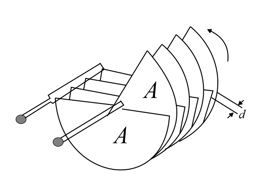


Important Questions on Capacitance
The figure shows a parallel-plate capacitor with a plate area and plate separation The top half of the gap is filled with material of dielectric constant the bottom half is filled with material of dielectric constant What is the capacitance?
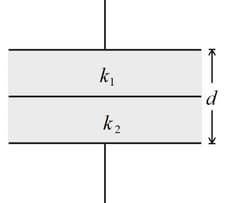
The capacitor in figure has a capacitance of and is initially uncharged. The battery provides a potential difference of . After switch is closed, how much charge will pass through it?
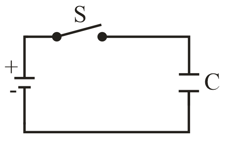
If an uncharged parallel-plate capacitor (capacitance ) is connected to a battery, one plate becomes negatively charged as electrons move to the plate face (area ). In Figure, the depth from which the electrons come in the plate in a particular capacitor is plotted against a range of values for the potential difference of the battery. The density of conduction electrons in the copper plates is electrons . The vertical scale is set by and the horizontal scale is set by . What is the ratio ?
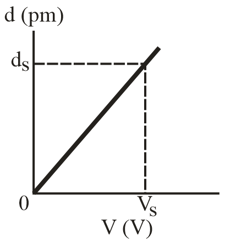
In the figure below, battery is connected across capacitors of capacitance and . What are (a) the equivalent capacitance of the capacitors and (b) the charge stored by What are (c) and (d) of capacitor (e) and (f) of capacitor and (g) and (h) of capacitor ?
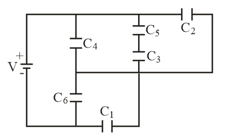
Figure represents two air-filled cylindrical capacitors connected in series across a battery with potential Capacitor has an inner plate radius of an outer plate radius of and a length of . Capacitor has an inner plate radius of an outer plate radius of and a length of The outer plate of capacitor is a conducting organic membrane that can be stretched, and the capacitor can be inflated to increase the plate separation. If the outer plate radius is increased to by inflation, (a) how many electrons move through point and (b) do they move toward or away from the battery?
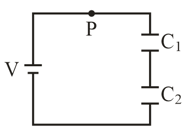
For the arrangement of figure, given below, suppose that the battery remains connected while the dielectric slab is being introduced. Calculate (a) the capacitance, (b) the charge on the capacitor plates, (c) the electric field in the gap, and (d) the electric field in the slab, after the slab is in place.
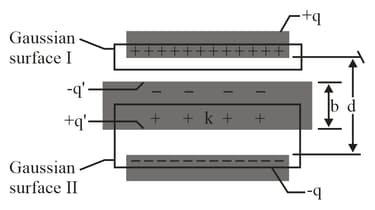
Assume , , , , and .
